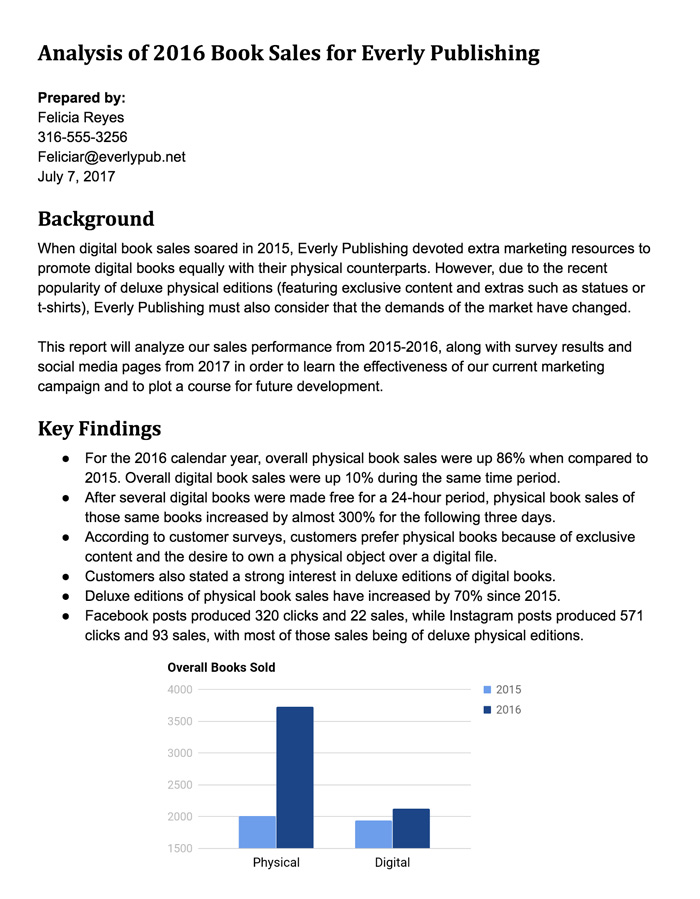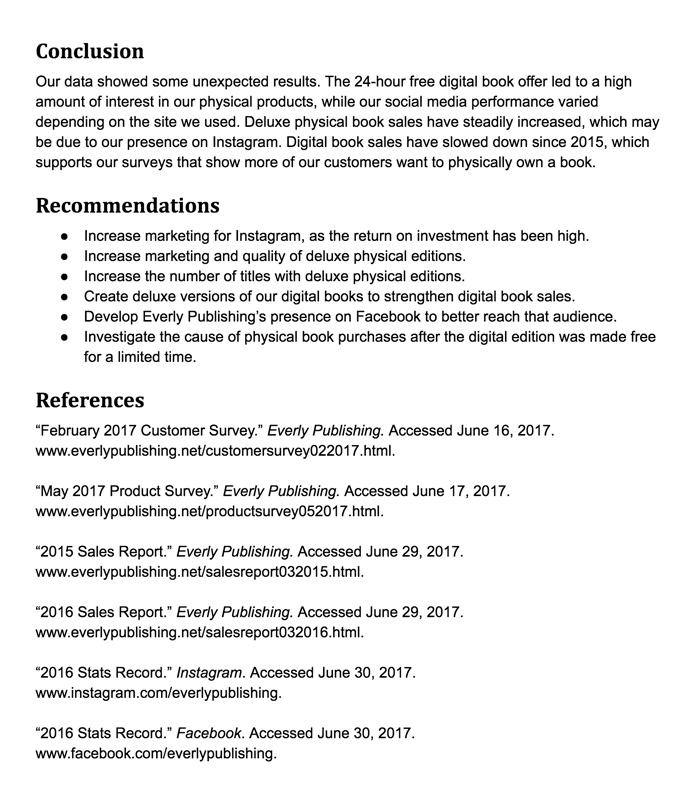

When a company needs to make an informed decision, it can create a business report to guide its leaders. Business reports use facts and research to study data, analyze performance, and provide recommendations on a company's future.
Watch the video below to learn how to write and format a business report.
Business reports are always formal, objective, and heavily researched. Every fact must be clear and verifiable, regardless of whether the report focuses on a single situation or examines the overall performance of an entire company.
Because objectivity is crucial in a business report, avoid subjective descriptions that tell the reader how to feel. For instance, if sales were down last quarter, don’t say “Sales were terrible last quarter,” but rather let the sales data speak for itself. There should also be no personal pronouns, such as “I think we should invest more capital.” A business report should remain impersonal and framed from the company’s perspective.
Although the size of a report can range from one page to 100, structure is always important because it allows readers to navigate the document easily. While this structure can vary due to report length or company standards, we’ve listed a common, reliable structure below:
Some companies may also require an executive summary after the front matter section, which is a complete summary that includes the report’s background, key findings, and recommendations. This section lets people learn the highlights quickly without having to read the entire document. The size of an executive summary can range from a paragraph to multiple pages, depending on the length of the report.
As mentioned in Business Writing Essentials, revision is key to producing an effective document. Review your writing to keep it focused and free of proofreading errors, and ensure your factual information is correct and presented objectively. We also recommend you get feedback from a colleague before submitting your work because they can spot errors you missed or find new opportunities for analysis or discussion.
Once you’ve revised your content, think about the report’s appearance. Consider turning your front matter section into a cover page to add some visual polish. You can also create a table of contents if the report is lengthy. If you’re printing it out, use quality paper and a folder or binder to hold the report together. To diversify the presentation of your data, try using bulleted lists, graphics, and charts.
To demonstrate the principles of this lesson, we’ve created a brief business report for you to review.
Let's start by looking at the first page of this two-page report.

The layout of the front matter is simple and effective, while the background sets the stage in a quick, specific manner. The key findings provide the main takeaways that warrant further investigation, along with a chart to add emphasis and visual variety.
Now let's look at the following page.

The conclusion features a little of the writer's opinion on the key findings, although the writing is still centered around the company's perspective. The recommendations are clear and supported by the data, while the references are thorough.
While business reports may seem intimidating, you have the ability to create a thorough, informative document through practice and careful research. Collect the facts and present them in an organized, objective manner, and you’ll help your business make informed decisions.